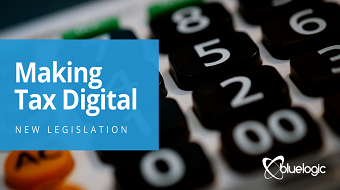Sarah Bell, Sage Service Manager / 4-March-2019
When Making Tax Digital (MTD) comes into force on 1 April 2019, it will fundamentally change the way businesses submit their VAT returns. With less than 4 months to go, Sarah Bell, Sage Service Manager at BCN Group, explains what it is, how it will impact your business, and what you must do to ensure compliance from the get-go.
Q: I keep hearing about Making Tax Digital. What is it?
A: Making Tax Digital is part of the government’s initiative to make tax administration easier for businesses and help them keep on top of their VAT liability. From the 1 April 2019, all VAT-registered businesses with a turnover of £85,000+ must submit VAT returns using accounting software such as Sage. They will no longer be able to submit them manually through the HMRC’s gateway portal.
Q: So why is Making Tax Digital happening?
A: Her Majesty’s Revenue and Customs (HMRC) is on a mission to become one of the most digitally-advanced tax administrations in the world. HMRC estimates that it currently loses around £9 billion a year through avoidable taxation errors, and believes this is partly down to the way in which businesses declare their VAT. Through digital record keeping and automated VAT submissions, the MTD scheme aims to close this tax gap, while also improving the efficiency and effectiveness of the submission process.
Q: Are there any benefits to my businesses?
A: The logic behind digitising the tax system is widely accepted. Millions of businesses already use digital solutions, so a tax submission system based on digital technology is the next logical step.
Recording and submitting VAT through accounting software like Sage, as opposed to relying on the traditional paper ledger practices, will reduce costs for businesses. In fact, recent research has shown that small and medium sized organisations can save up to £17,000 per annum by using digital accounting software.
Digitising business tasks such as record keeping will also make tax filing easer. Businesses will no longer be required to supply the same information twice, and will also benefit from a real-time review of their VAT liability, which should avoid any surprise bills. In addition, in the event that HMRC intervention is required, digital records will reduce the uncertainty and worry this would normally cause.
Q: I already file my returns through Sage. What will change?
A: If you are using Sage200 or Sage50, you will need to make sure you are running the latest version of the software. From April next year, the only versions of Sage that will be compliant for VAT filing will be Sage200C – Spring 18 Release and Sage50 v24. Your BCN Group account manager will be in touch shortly to guide you through the process.
We have also updated our data sheets for Sage 50 and Sage 200, which can be accessed Sage 50 here and Sage 200 here.
Q: If I have until April 2019 to upgrade, why should I do it now?
A: Ensuring compliance is not just about being ready for the legal change-over. It is also about being prepared and being able to iron out any issues before the law comes into effect. This includes getting used to the upgraded software and understanding how to access new features not available in older versions of the system.
In short, doing the heavy lifting now means ensuring your business doesn’t fall foul of the new requirements when they come into force on 1 April 2019.
If you would like to learn more, feel free to contact us by clicking the link below.




